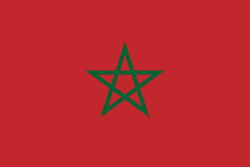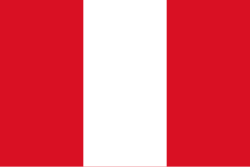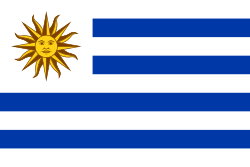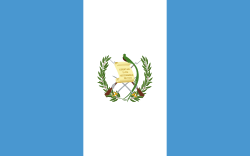Månfördraget
| Månfördraget Avtalet om staters aktiviteter på månen och andra himlakroppar | |
 | |
| Typ | Multilateralt avtal |
|---|---|
| Innehåll | Reglering av staters rättigheter och skyldigheter i rymden. |
| Signerades | 18 december 1979 |
| Plats | New York, USA |
| Trädde i kraft | 11 juli 1984 |
| Parter | 17 |
| Ratificerat av |
|
| Signerat av | |
| Moon Treaty | |
Månfördraget (officiellt: Avtalet om staters aktiviteter på månen och andra himlakroppar) är ett internationellt avtal som reglerar staters verksamhet på månen och andra himlakroppar. Avtalet tillkom under kalla kriget men signerades aldrig av vare sig USA eller Sovjetunionen. Månfördraget fastslår att jurisdiktionen för alla himlakroppar (inklusive omloppsbanorna runt dem) ska vara det internationella samfundet. Därför måste all verksamhet där överensstämma med internationell rätt (särskilt FN-stadgan).
I praktiken är det ett misslyckat fördrag, eftersom det inte har ratificerats av någon av de nationer som ägnar sig åt utforskning av rymden eller har planer på att göra det (till exempel USA, Storbritannien, Europeiska unionen, Ryssland, Kina, Japan eller Indien) sedan tillkomsten 1979 har avtalet därför haft en försumbar effekt på den faktiska rymdverksamheten.
Parter
Fördraget har ratificerats av Australien, Österrike, Belgien, Chile, Kazakstan, Libanon, Mexiko, Marocko, Nederländerna, Pakistan, Peru, Filippinerna och Uruguay. Dessutom har det endast signerats, utan ratifikation, av Frankrike, Guatemala, Indien och Rumänien.
Innehåll
Fördraget gäller månen och andra himlakroppar i solsystemet, utöver jorden, inklusive banorna runt dem och andra banor till och från dem.
I fördraget görs en försäkran om att månen ska användas endast till förmån för alla stater och folk i det internationella samfundet. Fördraget uttrycker också en önskan om att förhindra att månen blir en källa till internationell konflikt.
Punkter i fördraget
- Förbud mot all militär användning av himlakroppar, såsom vapentester och militärbaser.
- Förbud mot all prospektering och användning av himlakroppar utan godkännande eller till förmån för andra stater inom ramen för FN:s deklaration om det gemensamma världsarvet (artikel 11).
- Krav på att FN:s generalsekreterare ska underrättas om alla rymdverksamhet (och upptäckter som gjorts tack vare denna verksamhet).
- En förklaring om att alla stater har lika rätt att bedriva forskning på himlakroppar.
- En förklaring om att stater måste tillgängliggöra prover som erhållits under forskning på himlakroppar för andra stater.
- Förbud mot att ändra miljön på himlakroppar och krav på att stater måste vidta åtgärder för att förhindra oavsiktlig nedskräpning.
- Förbud mot att stater kräver suveränitet över ett territorium av himlakroppar.
- Förbud mot att tillåta privat ägande av himlakroppar.
- Krav på att resursfördelning i rymden ska ske enligt en internationell ordning.[1]
Referenser
| ||||||||||||||||||||||||||||||||||||||||||
Media som används på denna webbplats
Det är enkelt att lägga till en ram runt den här bilden
MAVEN at Mars, Artist's Concept. This artist's concept depicts NASA's Mars Atmosphere and Volatile EvolutioN (MAVEN) spacecraft near Mars. MAVEN is in development for launch in 2013 and will be the first mission devoted to understanding the Martian upper atmosphere. The mission's principal investigator is Bruce Jakosky from the Laboratory for Atmospheric and Space Physics at the University of Colorado.
The goal of MAVEN is to determine the role that loss of atmospheric gas to space played in changing the Martian climate through time. MAVEN will determine how much of the Martian atmosphere has been lost over time by measuring the current rate of escape to space and gathering enough information about the relevant processes to allow extrapolation backward in time.
NASA Goddard Space Flight Center in Greenbelt, Md. manages the project and will also build some of the instruments for the mission. In addition to the principal investigator coming from CU-LASP, the university will provide science operations, build instruments, and lead education/public outreach. Lockheed Martin of Littleton, Colo., is building the spacecraft and will perform mission operations. The University of California-Berkeley Space Sciences Laboratory is also building instruments for the mission. NASA's Jet Propulsion Laboratory, Pasadena, Calif., will provide navigation support, the Deep Space Network, and the Electra telecommunications relay hardware and operations.
For more information about MAVEN, visit www.nasa.gov/maven.The Flag of Europe is the flag and emblem of the European Union (EU) and Council of Europe (CoE). It consists of a circle of 12 golden (yellow) stars on a blue background. It was created in 1955 by the CoE and adopted by the EU, then the European Communities, in the 1980s.
The CoE and EU are distinct in membership and nature. The CoE is a 47-member international organisation dealing with human rights and rule of law, while the EU is a quasi-federal union of 27 states focused on economic integration and political cooperation. Today, the flag is mostly associated with the latter.
It was the intention of the CoE that the flag should come to represent Europe as a whole, and since its adoption the membership of the CoE covers nearly the entire continent. This is why the EU adopted the same flag. The flag has been used to represent Europe in sporting events and as a pro-democracy banner outside the Union.bendera Indonesia
Flag of Iran. The tricolor flag was introduced in 1906, but after the Islamic Revolution of 1979 the Arabic words 'Allahu akbar' ('God is great'), written in the Kufic script of the Qur'an and repeated 22 times, were added to the red and green strips where they border the white central strip and in the middle is the emblem of Iran (which is a stylized Persian alphabet of the Arabic word Allah ("God")).
The official ISIRI standard (translation at FotW) gives two slightly different methods of construction for the flag: a compass-and-straightedge construction used for File:Flag of Iran (official).svg, and a "simplified" construction sheet with rational numbers used for this file.
Flag of Israel. Shows a Magen David (“Shield of David”) between two stripes. The Shield of David is a traditional Jewish symbol. The stripes symbolize a Jewish prayer shawl (tallit).
This is the national flag of Belgium, according to the Official Guide to Belgian Protocol. It has a 13:15 aspect ratio, though it is rarely seen in this ratio.
Its colours are defined as Pantone black, Pantone yellow 115, and Pantone red 032; also given as CMYK 0,0,0,100; 0,8.5,79,0; and 0,94,87,0.Författare/Upphovsman:
- BlankMap-World6.svg: Happenstance et al.
- derivative work: Danlaycock






































